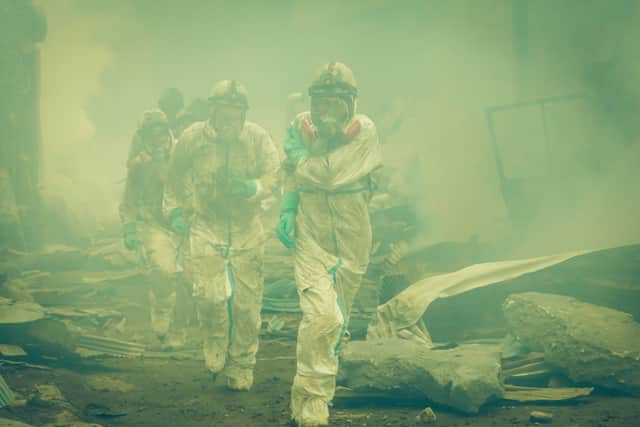Fukushima nuclear disaster: what happened in Japan, how many people died, is it still radioactive today?
The devastating 2011 Japanese earthquake and tsunami, and subsequent Fukushima nuclear disaster, is revisited by Netflix drama series The Days

By Steven Ross
Published 31st May 2023, 15:33 BST
Nuclear power has long been a source of debate in Japan - it is the only nation to have been attacked by nuclear weapons in a military conflict - two atomic bombs were dropped on Japan in the closing days of the Second World War, killing up to 226,000 people.
But in more recent history, a fresh nuclear disaster rocked the island nation - a meltdown at a nuclear plant caused by the 2011 Tōhoku earthquake and tsunami caused major damage to infrastructure, the displacement of thousands of people, and renewed doubts about nuclear power.
Now a new Netflix drama, The Days, revisits the 2011 Fukushima nuclear disaster to explore what went wrong, and how. The eight-part series is based on the book On the Brink: The Inside Story of Fukushima Daiichi by investigative journalist Ryusho Kadota.
More than a decade on from the shocking disaster, thousands of Japanese still refuse to return to live near the site, whilst Japanese authorities struggle to deal with fallout.
 Workers construct water tanks at Fukushima nuclear plant, damage to reactor 4, newspaper headlines about the earthquake and tsunami, ant-nuclear power protestors, a barrier to the exclusion zone
Workers construct water tanks at Fukushima nuclear plant, damage to reactor 4, newspaper headlines about the earthquake and tsunami, ant-nuclear power protestors, a barrier to the exclusion zoneWhat was the Fukushima nuclear disaster?
The 9.1 magnitude Tōhoku earthquake, which hit on the afternoon of 11 March 2011, is still the fourth most powerful quake ever recorded worldwide. The earthquake occurred in the Pacific Ocean around 80 miles east of the island of Japan and triggered a powerful tsunami.
The earthquake was so powerful that it affected the water of fjords in Norway 5,000 miles away. The tsunami, which had waves of up to 14 metres high, seriously damaged the generators at the Fukushima Daiichi Nuclear Power Plant.
This led to three meltdowns and hydrogen explosions and was the most serious nuclear accident since the 1986 Chernobyl disaster in Ukraine. Fukushima and Chrenobyl are the only disasters to have been rated a seven on the International Nuclear Event Scale.
It was reported that radiation levels outside the nuclear plant were eight times higher than normal, and around 200,000 people were evacuated from the area.
Additionally, water that had been used to cool the reactors and became radioactive was found in tap water after the disaster. The radioactive water at the plant will be dispersed into the Pacific ocean over a period of 30 years.
How many people died in the Fukushima nuclear disaster?
One person was confirmed to have died from exposure to radiation as a result of the disaster. A number of people were also confirmed to have died as a result of the evacuation from the disaster zone.
16 people were injured in the explosion and two workers were hospitalised with radiation burns. Additionally, more than 19,500 people died across Japan as a result of the earthquake and tsunami.
 Netflix drama series The Days
Netflix drama series The DaysIs Fukushima still radioactive?
As of 2023 there is an exclusion zone of a 12.4 mile radius around the now disabled nuclear plant although the levels of background radiation in these areas are within safe levels. In August last year the last remaining evacuation order, for the town of Futaba, where the plant is located, was lifted.
However, the majority of people who were evacuated in the wake of the disaster have not returned. The population of Futaba shrank from around 73,000 in 2010 to just over 7,000 in 2015, though its official population was zero as those who returned were not permanent legal residents.
The plant itself is where the highest levels of radiation remain, though it is possible to visit for short periods of time, with permission from local authorities. The half life of the radioactive material is 29 years, so the amount of radioactive material at Fukushima will have halved by 2040.
The remaining exclusion zone around the plant, which is 2.4% of the Fukushima Prefecture, is expected to be uninhabitable for permanent residents for at least 100 years. Conversely, the Chernobyl exclusion is not expected to be safe for permanent residency for around 20,000 years.
When is The Days on Netflix?
The days will be released on Netflix on Thursday 1 June 2023. All eight episodes will land on the site in one go.
Related topics:EarthquakeJapanHistoryNetflix
No comments:
Post a Comment